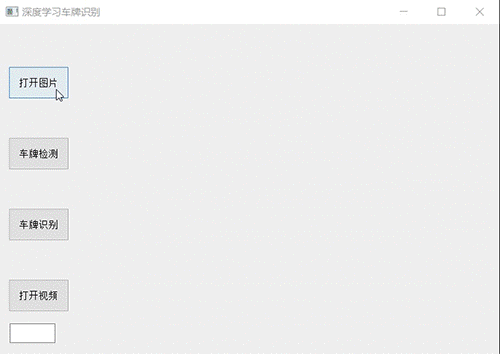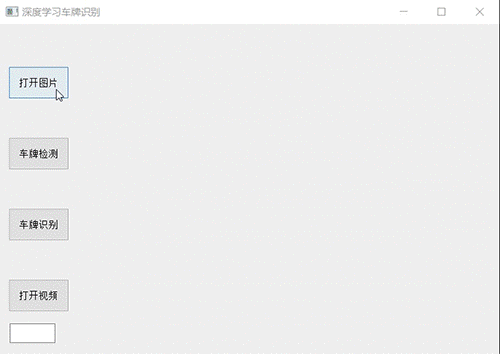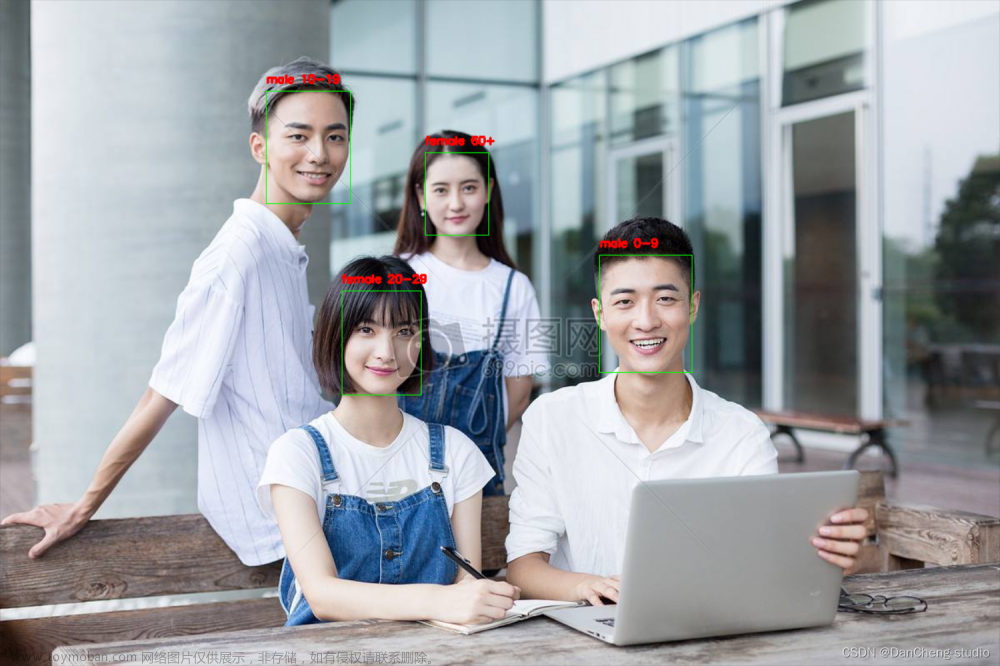前言:
😊😊😊欢迎来到本博客😊😊😊
目前正在进行 OpenCV技能树的学习,OpenCV是学习图像处理理论知识比较好的一个途径,至少比看书本来得实在。本专栏文章主要记录学习OpenCV的过程以及对学习过程的一些反馈记录。感兴趣的同学可以一起学习、一起交流、一起进步。🌟🌟🌟
下面框架图主要是OpenCV入门技能树总共有27个知识点,其中包括了8个大章的学习内容,如果感兴趣的可以进一步学习博主写的关于OpenCV的专栏【通俗易懂OpenCV(C++版)详细教程】:

🎁🎁🎁支持:如果觉得博主的文章还不错或者您用得到的话,可以悄悄关注一下博主哈,如果三连收藏支持就更好啦!这就是给予我最大的支持!😙😙😙
二、OpenCV中的深度学习
2.1 图像分类
题目:opencv.dnn做图像分类

图像分类是基于深度学习的计算机视觉任务中最简单、也是最基础的。
它其中用到的CNN特征提取技术也是目标检测、目标分割等视觉任务的基础。
具体到图像分类任务而言,其具体流程如下:
1、输入指定大小RGB图像,1/3通道,宽高一般相等;
2、通过卷积神经网络进行多尺度特征提取,生成高维特征值;
3、利用全连接网络、或其他结构对高维特征进行分类,输出各目标分类的概率值(概率和为1);
4、选择概率值最高的作为图像分类结果;


opencv.dnn模块可以直接加载深度学习模型,并进行推理输出运行结果。
下面是opencv.dnn模块加载googlenet caffe模型进行图片分类的代码,请你完善其中TO-DO部分的代码。
代码中LABEL_MAP是图像分类名称字典,给定索引得到具体分类名称(string)。
import cv2
import numpy as np
from labels import LABEL_MAP # 1000 labels in imagenet dataset
if __name__=='__main__':
# caffe model, googlenet aglo
weights = "bvlc_googlenet.caffemodel"
protxt = "bvlc_googlenet.prototxt"
# read caffe model from disk
net = cv2.dnn.readNetFromCaffe(protxt, weights)
# create input
image = cv2.imread("ocean-liner.jpg")
blob = cv2.dnn.blobFromImage(image, 1.0, (224, 224), (104, 117, 123), False, crop=False)
result = np.copy(image)
# run!
net.setInput(blob)
out = net.forward()
# TODO(You): 请在此实现代码
# time cost
t, _ = net.getPerfProfile()
label = 'cost time: %.2f ms' % (t * 1000.0 / cv2.getTickFrequency())
cv2.putText(result, label, (0, 20), cv2.FONT_HERSHEY_SIMPLEX, 0.8, (255, 255, 0), 2)
# render on image
label = '%s: %.4f' % (LABEL_MAP[classId] if LABEL_MAP else 'Class #%d' % classId, confidence)
cv2.putText(result, label, (0, 60), cv2.FONT_HERSHEY_SIMPLEX, 1, (0, 0, 255), 2)
show_img = np.hstack((image, result))
# normal codes in opencv
cv2.imshow("Image", show_img)
cv2.waitKey(0)
解析:
#output probability, find the right index
out = out.flatten()
classId = np.argmax(out)
confidence = out[classId]
2.2 目标检测
题目:opencv实现目标检测功能
早在 2017 年 8 月,OpenCV 3.3 正式发布,带来了高度改进的“深度神经网络”(dnn)模块。
该模块支持多种深度学习框架,包括 Caffe、TensorFlow 和 Torch/PyTorch。
这次我们使用Opencv深度学习的功能实现目标检测的功能,模型选用MobileNetSSD_deploy.caffemodel。
目前已经实现了模型加载和预测的代码,但是如何将结果取出来并绘制到图片上呢?如下图:

代码如下:
import numpy as np
import cv2
if __name__=="__main__":
image_name = '11.jpg'
prototxt = 'MobileNetSSD_deploy.prototxt.txt'
model_path = 'MobileNetSSD_deploy.caffemodel'
confidence_ta = 0.2
# 初始化MobileNet SSD训练的类标签列表
# 检测,然后为每个类生成一组边界框颜色
CLASSES = ["background", "aeroplane", "bicycle", "bird", "boat",
"bottle", "bus", "car", "cat", "chair", "cow", "diningtable",
"dog", "horse", "motorbike", "person", "pottedplant", "sheep",
"sofa", "train", "tvmonitor"]
COLORS = np.random.uniform(0, 255, size=(len(CLASSES), 3))
# load our serialized model from disk
print("[INFO] loading model...")
net = cv2.dnn.readNetFromCaffe(prototxt, model_path)
# 加载输入图像并为图像构造一个输入blob
# 将大小调整为固定的300x300像素。
# (注意:SSD模型的输入是300x300像素)
image = cv2.imread(image_name)
(h, w) = image.shape[:2]
blob = cv2.dnn.blobFromImage(cv2.resize(image, (300, 300)), 0.007843,
(300, 300), 127.5)
# 通过网络传递blob并获得检测结果和
# 预测
print("[INFO] computing object detections...")
net.setInput(blob)
detections = net.forward()
# TODO(You): 请在此编写循环检测结果
# show the output image
cv2.imshow("Output", image)
cv2.imwrite("output.jpg", image)
cv2.waitKey(0)
以下对“循环检测结果”代码实现正确的是?
解析:
for i in np.arange(0, detections.shape[2]):
#提取与数据相关的置信度(即概率)
#预测
confidence = detections[0, 0, i, 2]
#通过确保“置信度”来过滤掉弱检测
#大于最小置信度
if confidence > confidence_ta:
# 从`detections`中提取类标签的索引,
# 然后计算物体边界框的 (x, y) 坐标
idx = int(detections[0, 0, i, 1])
box = detections[0, 0, i, 3:7] * np.array([w, h, w, h])
(startX, startY, endX, endY) = box.astype("int")
# 显示预测
label = "{}: {:.2f}%".format(CLASSES[idx], confidence * 100)
print("[INFO] {}".format(label))
cv2.rectangle(image, (startX, startY), (endX, endY),
COLORS[idx], 2)
y = startY - 15 if startY - 15 > 15 else startY + 15
cv2.putText(image, label, (startX, y),
cv2.FONT_HERSHEY_SIMPLEX, 0.5, COLORS[idx], 2)
2.3 人脸识别
题目:opencv实现人脸检测功能
早在 2017 年 8 月,OpenCV 3.3 正式发布,带来了高度改进的“深度神经网络”(dnn)模块。
该模块支持多种深度学习框架,包括 Caffe、TensorFlow 和 Torch/PyTorch。
OpenCV 的官方版本中包含了一个更准确、基于深度学习的人脸检测器,链接:https://github.com/opencv/opencv/tree/4.x/samples/dnn/face_detector。
目前已经实现了模型加载和预测的代码,但是如何将结果取出来并绘制到图片上呢?如下图:

遍历代码的逻辑如下:
(1) 遍历检测结果。
(2) 然后,我们提取置信度并将其与置信度阈值进行比较。
我们执行此检查以过滤掉弱检测。 如果置信度满足最小阈值,我们继续绘制一个矩形以及检测概率。
(3) 为此,我们首先计算边界框的 (x, y) 坐标。 然后我们构建包含检测概率的置信文本字符串。
如果我们的文本偏离图像(例如当面部检测发生在图像的最顶部时),我们将其向下移动 10 个像素。
我们的面部矩形和置信文本绘制在图像上。
(4)然后,我们再次循环执行该过程后的其他检测。 如果没有检测到,我们准备在屏幕上显示我们的输出图像)。
代码如下:
import numpy as np
import cv2
if __name__=='__main__':
low_confidence=0.5
image_path='2.jpg'
proto_txt='deploy.proto.txt'
model_path='res10_300x300_ssd_iter_140000_fp16.caffemodel'
# 加载模型
print("[INFO] loading model...")
net = cv2.dnn.readNetFromCaffe(proto_txt, model_path)
# 加载输入图像并为图像构建一个输入 blob
# 将大小调整为固定的 300x300 像素,然后对其进行标准化
image = cv2.imread(image_path)
(h, w) = image.shape[:2]
blob = cv2.dnn.blobFromImage(cv2.resize(image, (300, 300)), 1.0,
(300, 300), (104.0, 177.0, 123.0))
# 通过网络传递blob并获得检测和预测
print("[INFO] computing object detections...")
net.setInput(blob)
detections = net.forward()
# 循环检测
# TODO(You):请实现循环检测的代码。
# 展示图片并保存
cv2.imshow("Output", image)
cv2.imwrite("01.jpg",image)
cv2.waitKey(0)
解析:
for i in range(0, detections.shape[2]):
#提取与相关的置信度(即概率)
#预测
confidence = detections[0, 0, i, 2]
#通过确保“置信度”来过滤掉弱检测
#大于最小置信度
if confidence > low_confidence:
#计算边界框的 (x, y) 坐标
box = detections[0, 0, i, 3:7] * np.array([w, h, w, h])
(startX, startY, endX, endY) = box.astype("int")
#绘制人脸的边界框以及概率
text = "{:.2f}%".format(confidence * 100)
y = startY - 10 if startY - 10 > 10 else startY + 10
cv2.rectangle(image, (startX, startY), (endX, endY),(0, 0, 255), 2)
cv2.putText(image, text, (startX, y),cv2.FONT_HERSHEY_SIMPLEX, 0.45, (0, 0, 255), 2)
2.4 姿态估计
题目:使用Python+OpenCV实现姿态估计
姿态估计使用Opencv+Mediapipe来时实现
什么是Mediapipe?
Mediapipe是主要用于构建多模式音频,视频或任何时间序列数据的框架。
借助MediaPipe框架,可以构建令人印象深刻的ML管道,例如TensorFlow,TFLite等推理模型以及媒体处理功能。
安装命令:pip install mediapipe
如果没有安装需要安装,请执行这个命令。
通过视频或实时馈送进行人体姿态估计在诸如全身手势控制,量化体育锻炼和手语识别等各个领域中发挥着至关重要的作用。
例如,它可用作健身,瑜伽和舞蹈应用程序的基本模型。它在增强现实中找到了自己的主要作用。
Media Pipe Pose是用于高保真人体姿势跟踪的框架,该框架从RGB视频帧获取输入并推断出整个人类的33个3D界标。
当前最先进的方法主要依靠强大的桌面环境进行推理,而此方法优于其他方法,并且可以实时获得很好的结果。
模型可以预测33个关键点,如下图:

我们使用OpenCV+mediapipe实现姿态估计,我已经实现了代码,请大家找出能够正确执行的代码!
import cv2
import mediapipe as mp
import time
mpPose = mp.solutions.pose
pose = mpPose.Pose()
mpDraw = mp.solutions.drawing_utils
cap = cv2.VideoCapture('1.mp4')
pTime = 0
#TODO(You): 请在此实现并输出检测结果
# do a bit of cleanup
cv2.destroyAllWindows()
cap.release()
解析:
while True:
success, img = cap.read()
if success is False:
break
imgRGB = cv2.cvtColor(img, cv2.COLOR_BGR2RGB)
results = pose.process(imgRGB)
if results is None:
continue
print(results.pose_landmarks)
if results.pose_landmarks:
mpDraw.draw_landmarks(img, results.pose_landmarks, mpPose.POSE_CONNECTIONS)
for id, lm in enumerate(results.pose_landmarks.landmark):
h, w, c = img.shape
print(id, lm)
cx, cy = int(lm.x * w), int(lm.y * h)
cv2.circle(img, (cx, cy), 5, (255, 0, 0), cv2.FILLED)
cTime = time.time()
fps = 1 / (cTime - pTime)
pTime = cTime
cv2.putText(img, str(int(fps)), (50, 50), cv2.FONT_HERSHEY_SIMPLEX, 1, (255, 0, 0), 3)
cv2.imshow("Image", img)
key = cv2.waitKey(1) & 0xFF
2.5 车俩检测
题目:opencv-yolo-tiny车辆检测 文章来源:https://www.toymoban.com/news/detail-737949.html
opencv.dnn模块已经支持大部分格式的深度学习模型推理,该模块可以直接加载tensorflow、darknet、pytorch等常见深度学习框架训练出来的模型,并运行推理得到模型输出结果。
opecnv.dnn模块已经作为一种模型部署方式,应用在工业落地实际场景中。

模型具体加载和使用流程如下:
(1) 加载网络,读取模型、网络结构配置等文件
(2) 创建输入,opencv.dnn模块对图片输入有特殊格式要求
(3) 运行推理
(4) 解析输出
(5) 应用输出、显示输出
下面是opencv.dnn模块加载yolov3-tiny车辆检测模型并运行推理的代码,请你补充TO-DO相关代码(本题考察yolo系列检测模型输出解析):
import numpy as np
import cv2
import os
import time
from numpy import array
# some variables
weightsPath = './yolov3-tiny.weights'
configPath = './yolov3-tiny.cfg'
labelsPath = './obj.names'
LABELS = open(labelsPath).read().strip().split("\n")
colors = [(255, 255, 0), (255, 0, 255), (0, 255, 255), (0, 255, 0), (255, 0, 255)]
min_score = 0.3
# read darknet weights using opencv.dnn module
net = cv2.dnn.readNetFromDarknet(configPath, weightsPath)
# read video using opencv
cap = cv2.VideoCapture('./MY_TEST/8.h264')
# loop for inference
while True:
boxes = []
confidences = []
classIDs = []
start = time.time()
ret, frame = cap.read()
frame = cv2.resize(frame, (744, 416), interpolation=cv2.INTER_CUBIC)
image = frame
(H, W) = image.shape[0: 2]
# get output layer names
ln = net.getLayerNames()
out = net.getUnconnectedOutLayers()
x = []
for i in out:
x.append(ln[i[0]-1])
ln = x
# create input data package with current frame
blob = cv2.dnn.blobFromImage(image, 1 / 255.0, (416, 416), swapRB=True, crop=False)
# set as input
net.setInput(blob)
# run!
layerOutputs = net.forward(ln)
# post-process
# parsing the output and run nms
# TODO(You): 请在此实现代码
cv2.namedWindow('Image', cv2.WINDOW_NORMAL)
cv2.imshow("Image", image)
# print fps
stop = time.time()
fps = 1/(stop - start)
print('fps>>> :', fps)
# normal codes when displaying video
c = cv2.waitKey(1) & 0xff
if c == 27:
cap.release()
break
cv2.destroyAllWindows()
解析:文章来源地址https://www.toymoban.com/news/detail-737949.html
for output in layerOutputs:
for detection in output:
scores = detection[5:]
#class id
classID = np.argmax(scores)
#get score by classid
score = scores[classID]
#ignore if score is too low
if score >= min_score:
box = detection[0:4] * np.array([W, H, W, H])
(centerX, centerY, width, height)= box.astype("int")
x = int(centerX - (width / 2))
y = int(centerY - (height / 2))
boxes.append([x, y, int(width), int(height)])
confidences.append(float(score))
classIDs.append(classID)
#run nms using opencv.dnn module
idxs = cv2.dnn.NMSBoxes(boxes, confidences, 0.2, 0.3)
#render on image
idxs = array(idxs)
box_seq = idxs.flatten()
if len(idxs) > 0:
for seq in box_seq:
(x, y) = (boxes[seq][0], boxes[seq][1])
(w, h) = (boxes[seq][2], boxes[seq][3])
# draw what you want
color = colors[classIDs[seq]]
cv2.rectangle(image, (x, y), (x + w, y + h), color, 2)
text = "{}: {:.3f}".format(LABELS[classIDs[seq]], confidences[seq])
cv2.putText(image, text, (x, y - 5), cv2.FONT_HERSHEY_SIMPLEX, 0.3, color, 1)

到了这里,关于【OpenCV技能树】——OpenCV中的深度学习的文章就介绍完了。如果您还想了解更多内容,请在右上角搜索TOY模板网以前的文章或继续浏览下面的相关文章,希望大家以后多多支持TOY模板网!














